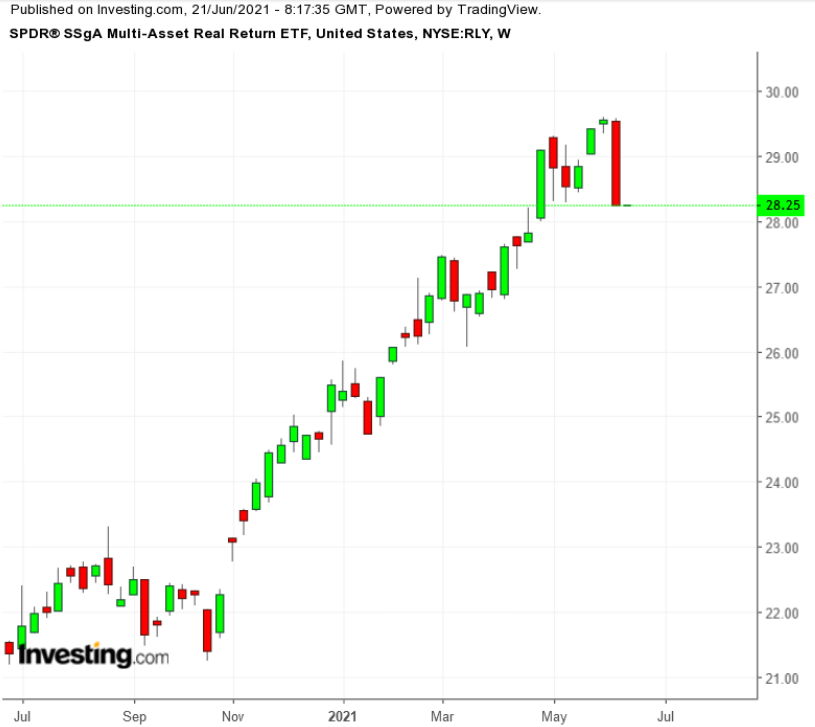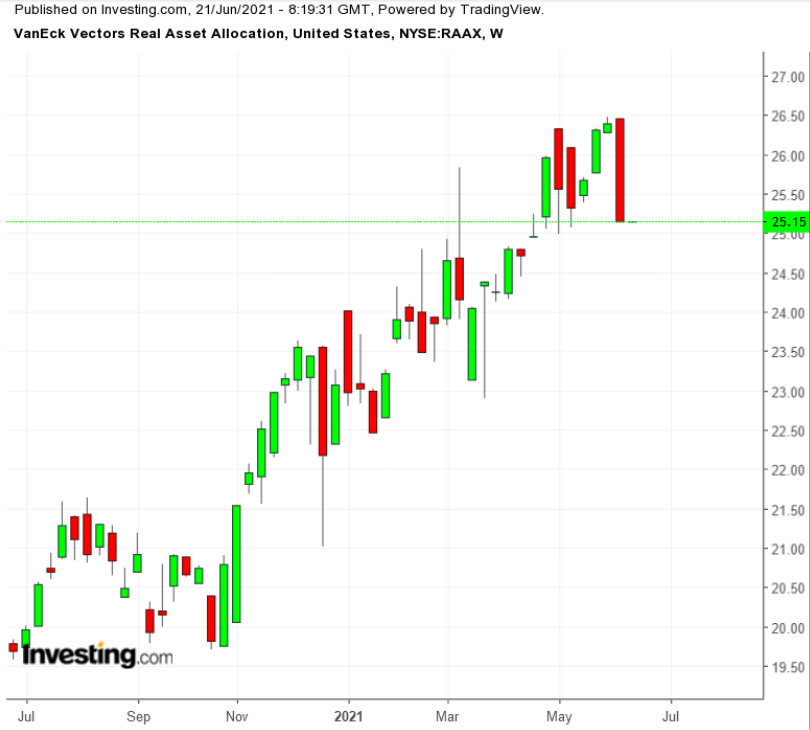US equity markets slid last week, following the Fed’s modestly-hawkish stance in response to surging inflation levels. The central bank aims to “achieve maximum employment and inflation at the rate of 2% over the longer run.” Although policy makers kept interest rates at the current record-low levels, the announcement signalled two possible rate hikes in 2023.
Higher rates can lead to lower disposable income for consumers, along with potentially higher borrowing costs for companies. These scenarios would typically mean different outcomes for stocks in different sectors.
Thus the exact impact interest rate hikes could have on stock prices would be anyone’s guess. However, we can note that the market has become used to low rates. Therefore, companies and investors will have to make some adjustments leading to increased volatility in asset prices. High frequency trading also contributes to intraday choppiness.
The new week could see wild swings that pressure broader markets. In general, corrections (or down moves) in equities happen rapidly. Meanwhile, the dollar, which has been trading higher against most major currencies, could continue the trend up.
We recently introduced two exchange-traded funds (ETFs) that could be appropriate for investors who want to adjust their portfolios for inflationary times ahead. Today, we extend that discussion.
1. SPDR SSGA Multi-Asset Real Return ETF
- Current Price: $28.25
- 52-Week Range: $20.89 - $29.61
- Dividend Yield: 1.77%
- Expense Ratio: 0.50% per year
The SPDR® SSgA Multi-Asset Real Return ETF (NYSE:RLY) invests in other ETFs that hold inflation protected securities, both domestic and international real estate securities, commodities, and shares of natural resources, including agriculture, energy, and metals and mining companies. The fund’s objective is both capital appreciation and current income.

RLY, which started trading in Apr. 25, 2012, tracks the Bloomberg Barclays US Government Inflation-Linked Bond Index as the primary benchmark. The fund also tracks the DBIQ Optimum Yield Diversified Commodity Index Excess Return as its secondary benchmark.
Natural resources lead the sectors by 34.14%, followed by commodities (24.15%), global infrastructure (22.7%), real estate (6.09%) and others. The fund has 11 holdings. Top three holdings (i.e., ETFs) comprise around 71.5% of net assets of $126.5 billion.
RLY’s top three funds are the SPDR® S&P Global Natural Resources ETF (NYSE:GNR), the Invesco Optimum Yield Diversified Commodity Strategy No K-1 ETF (NASDAQ:PDBC) and the SPDR® S&P Global Infrastructure ETF (NYSE:GII). As the fund is top heavy, short-term choppiness is possible in the days ahead.
RLY is up 31.1% in the past 52 weeks and returned more than 14.5% year-to-date (YTD). The ETF hit a multi-year high in recent days. Multi-asset investing could be appropriate for a range of investors who might want to research the fund further.
2. VanEck Vectors Real Asset Allocation ETF
- Current Price: $25.15
- 52-Week Range: $19.04 - $26.48
- Dividend Yield: 5.54%
- Expense Ratio: 0.78% per year
The VanEck Vectors Real Asset Allocation (NYSE:RAAX) also provides exposure to ETFs that invest in real assets, such as commodities, real estate, natural resources, and infrastructure. The fund, which uses a data-driven, rules-based process, aims to achieve long-term total return, while reducing downside risk.

RAAX, which started trading in April 2018, currently has 19 holdings. The leading 10 names comprise 78.3% of RAAX's net assets of $11.3 million. In other words, it is a small and young fund.
As far as fund allocations are concerned, resource assets lead with 46.69%, followed by income assets (24.02%) and financial assets (21.09%).
The Invesco Optimum Yield Diversified Commodity Strategy No K-1 ETF (NASDAQ:PDBC), the Vanguard Real Estate Index Fund ETF (NYSE:VNQ), the VanEck Merk Gold Trust (NYSE:OUNZ), the VanEck Vectors® Energy Income ETF (NYSE:EINC), and the Global X US Infrastructure Development ETF (NYSE:PAVE) top the list of current holdings.
So far in 2021, RAAX is up about 13.35% and saw a multi-year high on June 10. Over the past 52 weeks, the fund has returned 30.3% as income-producing assets have been resilient. Those investors who believe inflationary pressures could lead to further positive outlook for real assets should keep the ETF on their radar.
